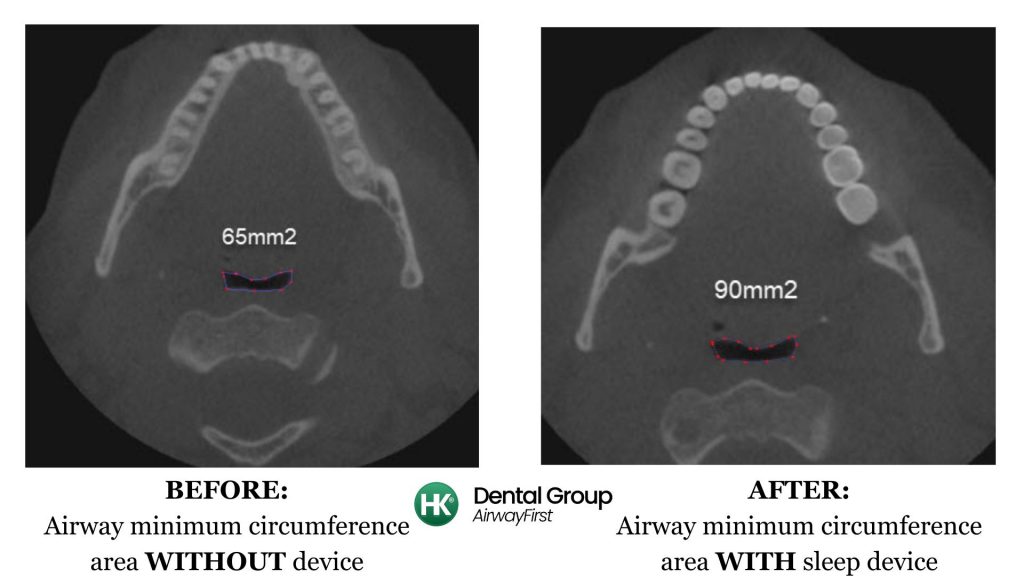A CT-scan is a type of Xray which allows for 3-dimensional measurement of the head and neck. If you look down the neck, from-the-top-down, you can measure the minimum circumference area of the breathing tube with a CT.
Snoring. And unable to fall back asleep after frequent trips to the bathroom. These are common symptoms for someone with a resisted breathing problem.
This 55-year old male chose to get a custom dental device to help solve this sleep problem. The dental device is worn while asleep to protect his airway. There’s four key steps to make a dental device properly:
- register a proper bite relationship between the jaws
- get precise impression of the teeth (either digital scan or classic puddy)
- send to lab, and make sure the bite & impression are perfectly matched
- when a perfect match is confirmed, lab can proceed to make a slim device
In this case, a posture bite technique was used to find the healthy jaw spot. And then a dental mouthpiece was made to match that posture bite.
This CT-scan report shows nearly a 50% increase in his airway minimum circumference area (from 65mm2 to 90mm2) with dental device fitted in place. Which means his breathing tube now has more support to keep his airflow.

AirwayFirst® case courtesy HK® Dental Group
Treatment architected by Harry Kunelis DDS
Posture bite: Harry Kunelis DDS
CT-Scan Source: Armitage Oral Surgery
Scan Report: Beam Readers